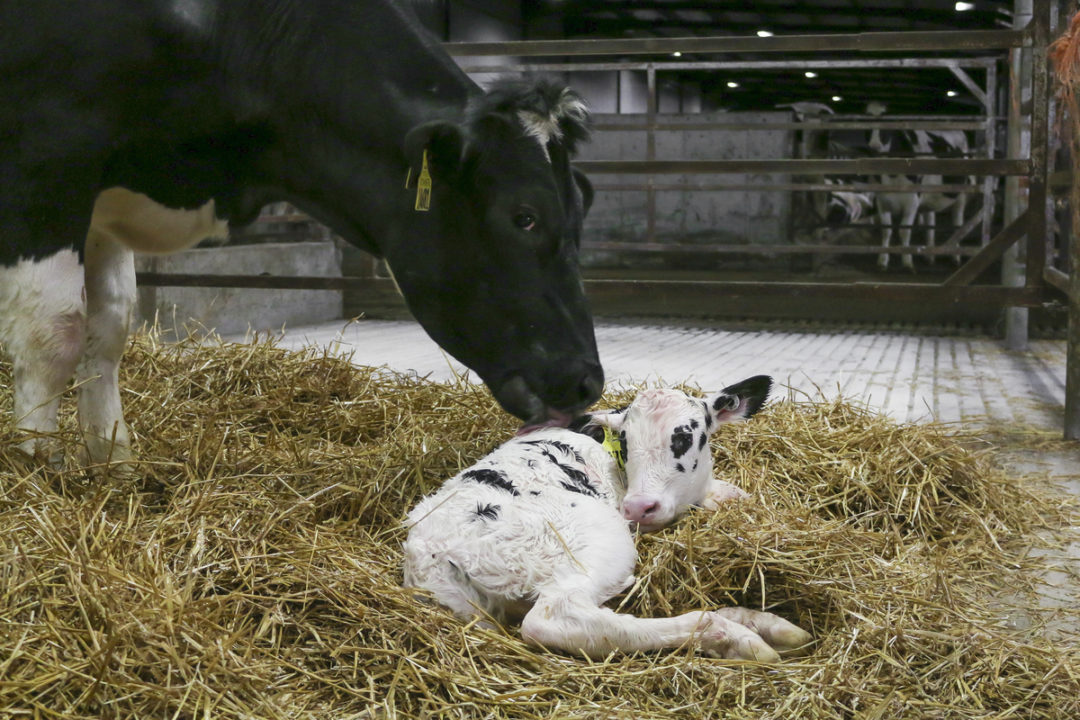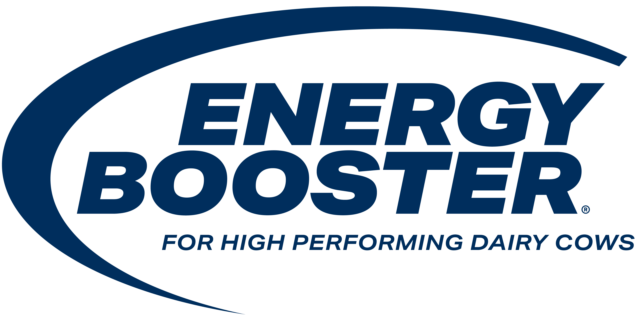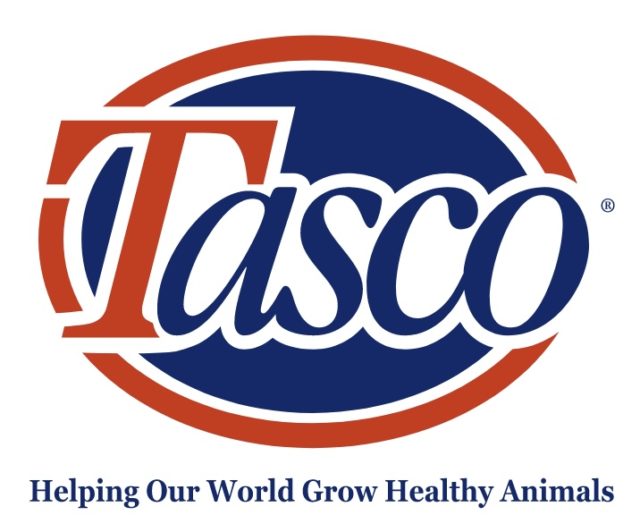The impacts of management during the transition period can make or break future lactations and overall herd health, putting at risk investments in genetics, farm profitability and welfare.
We should be asking:
- Are cows maintaining good health, without clinical diseases and metabolic problems?
- Are cows reaching their predicted performance through lactation?
- Are cows, on average, going into the transition period with a moderate body condition score (BCS)?
- Do they maintain a good appetite and lose less than one unit in a 1-to-5 scale of body condition during the postpartum period?
From the literature, we know that any “no” answers to these questions may indicate health issues that can lead to lower performance postpartum. Such health issues also increase the rate of clinical diseases, which are at the root of many issues for cows during the transition period.
Clinical diseases
In North America, the incidence of clinical diseases such as retained placenta, metritis, mastitis and lameness is around 50% during the 305-day lactation, with most cases occurring early in lactation.
Most often, cases can be diagnosed, treated and resolved shortly after diagnosis. The problem lies with the clinical presentation, which brings expenses and consequences even after the clinical resolution of the disease. Honestly, even cows that come through these challenges become problem cows.
We see this in a recent publication which evaluated the incidence of clinical diseases in more than 5,000 cows. By 21 days in milk, approximately 30% of the cows had been through at least one clinical disease. By 60 days in milk, that number had grown to over 40%.
Because most disease cases were observed so early, additional research focused on the first three weeks, separating cows into three categories: no disease, single disease or multiple disease.
The results were enlightening:
- Clinical diseases reduce milk production
Cows without disease incidence had a higher peak in lactation and reached that peak earlier, producing 357 kilograms (787 pounds) more milk during the 305-day lactation than single-disease cows and a full 703 kilograms (1,549 pounds) more than multiple-disease cows.
These cow groups were also evaluated considering genetic differences. Cows without disease incidence reached a similar production level to predicted values, only about a 59-kilogram (130-pound) difference, without a lot of variation. But cows that had experienced at least one clinical disease showed a much bigger difference of approximately 400 kilograms (880 pounds), showing that they could not reach their full genetic potential.
- Clinical diseases make it harder for cows to get pregnant and have a successful pregnancy
Diseases that happened very early in lactation were shown to affect a cow’s long-term fertility, reducing pregnancy rate by up to 29%. The effects of disease on the ability to sustain a successful pregnancy were also striking, showing a reduction of up to 46% for cows that had experienced multiple diseases.
- Culling associated with clinical diseases is costly
By the end of the 305-day lactation, the no-disease cows had a 22.6% cull rate, but cows that had either single or multiple cases of disease in the first two weeks were culled at rates of 35.7% and 53.8%, respectively. When we take a holistic view of the economic impact of these culls, the difference in profit for a single disease, compared with no disease, is more than $500 per cow – and when we talk about multiple diseases, it's more than $1,100.
We don't yet have effective interventions to eliminate these long-term consequences once clinical disease strikes, making prevention our best bet. Management that prioritizes close observation and proactive nutrition can help your cows navigate the transition.
Monitoring body condition score
Every farm should routinely score cows, with the goal of drying off cows with a BCS of 3.0-3.5. Overconditioned cows with a BCS higher than 3.5 at dry-off are more likely to lose BCS during dry-off after calving. A 2021 study showed that these overconditioned cows, in general, eat less than cows that are not overconditioned. This leads to a loss of body condition. The effect is stronger when cows are closer to calving and have a more significant drop in dry matter intake (DMI).
A large BCS loss after dry-off can have significant impacts on health and production. Researchers evaluated BCS at the time of dry-off and again at the time of calving. They found that cows with a large loss in BCS showed a steep rise in clinical problems such as retained placenta, metritis and digestion issues.
Nutritional management
A lot can be done in terms of nutritional management for transition cows, from feedbunk management to diet formulation, evaluation of forage quality and particle size, energy density of the diet, protein source and supplementation.
While trace minerals are a very, very small portion of the diet, they are critical to multiple physiological processes, including oxidative balance, protein synthesis and immune cell function. These minerals are commonly supplemented in rations by adding inorganic trace mineral salts (STM) such as sulphates, oxides and sodium selenite. However, these salts have an unstable ionic bond that can easily break down in the digestive tract, causing harmful molecular interactions that make the minerals much more difficult for the digestive tract to absorb and leading to environmental harm as the undigested minerals are excreted. Organic trace minerals (OTM), however, hold a stable bond that protects them from harmful interactions, increasing their bioavailability, which is especially important during the transition period.

Benefits from total replacement of inorganic trace mineral salts with organic ones
Recent research from the University of Guelph lab evaluated a strategy of completely replacing inorganic salt trace minerals with organic trace minerals in both pre- and postpartum diets. The inorganic ration was balanced with cobalt, copper, manganese and zinc sulphates and sodium selenite, while the organic ration replaced these salts with cobalt, copper, manganese and zinc proteinates and selenized yeast.
- DMI increases with the inclusion of organic trace minerals
The organic trace minerals group had a higher DMI, which provided an essential energy boost during the prepartum period (Figure 1). This is especially important in the last week prepartum to avoid the common problem of a large drop in intake at that time. During the postpartum period, DMI increased in the organic group for multiparous cows, though it remained the same in primiparous cows.
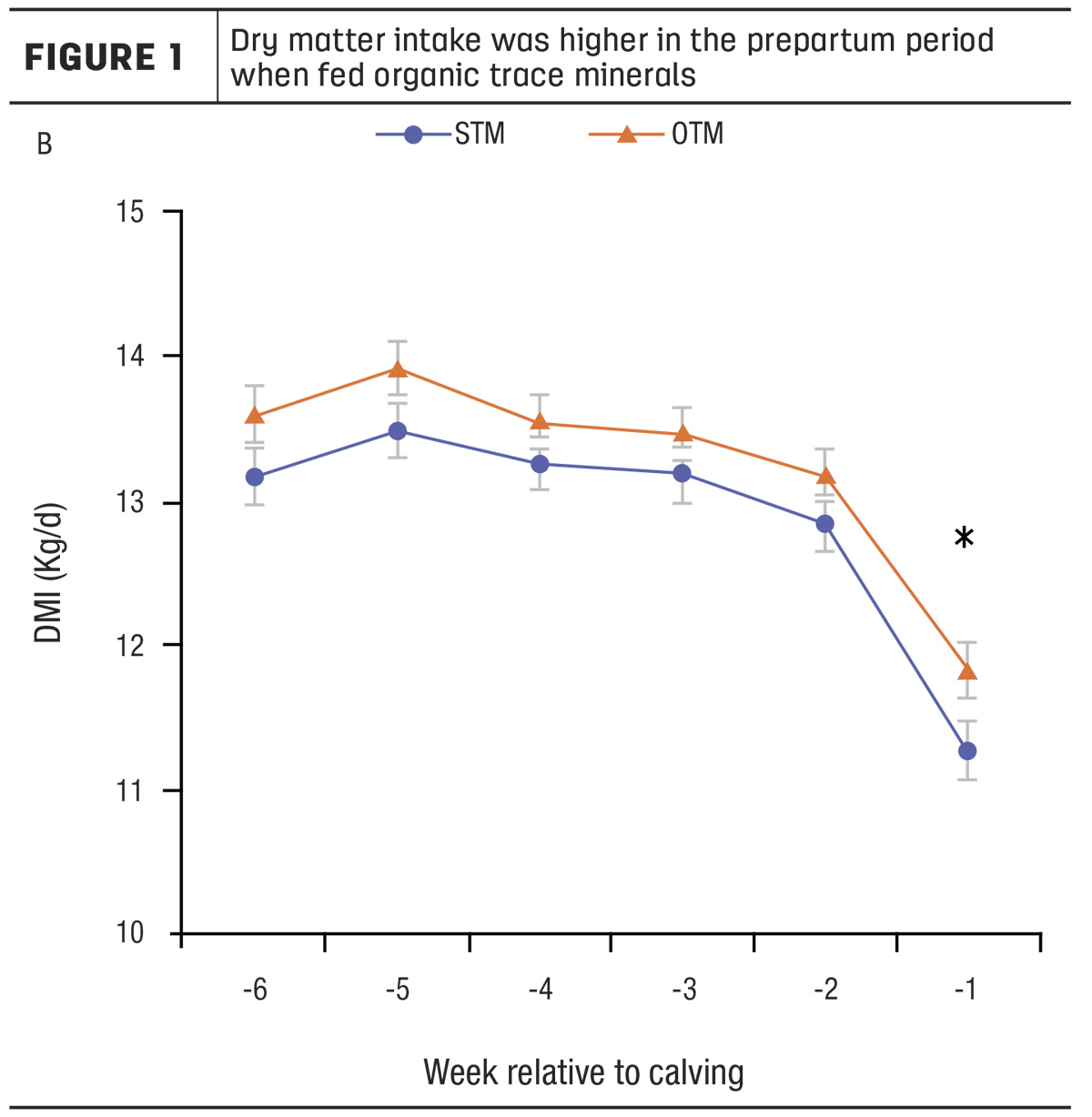
- Multiple effects seen on health status
Cows fed a ration with organic trace minerals during the transition period, as opposed to one with inorganic mineral salts, had reductions in lameness, non-esterified fatty acid (NEFA) concentration and incidence of multiple metabolic health problems (Table 1).
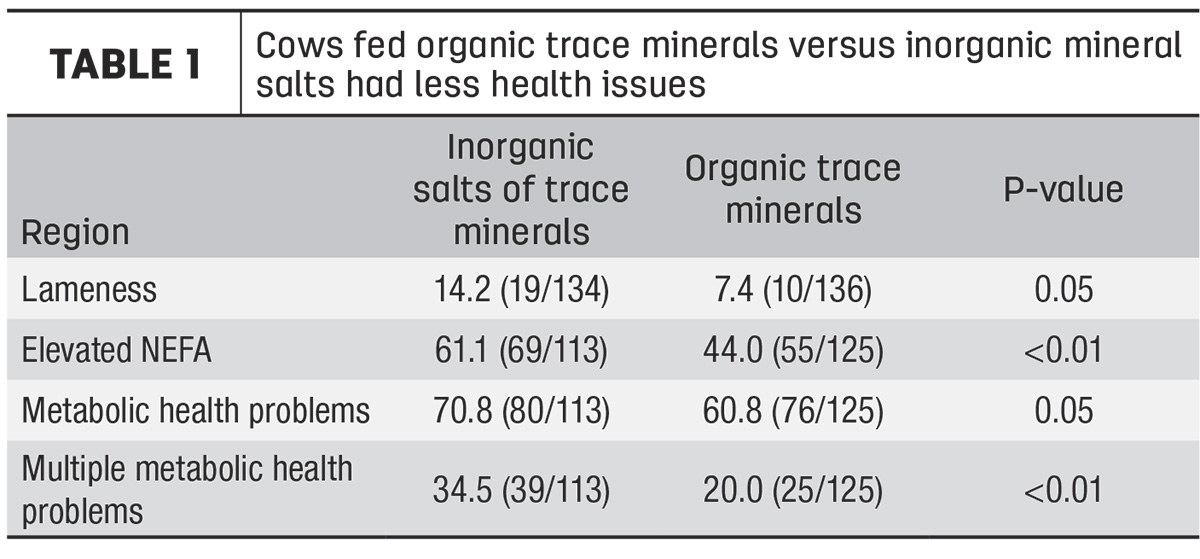
Postpartum clinical diseases and metabolic problems are a common and costly challenge for dairies, but careful management of cows during the transition period can prevent them. Avoiding overconditioned cows at time of dry-off is a simple way to make a big difference. When this kind of monitoring is combined with leading-edge nutritional solutions, such as replacing inorganic trace mineral salts with organic trace minerals, it can help make the transition period successful.
References omitted but are available upon request by sending an email to the editor.
